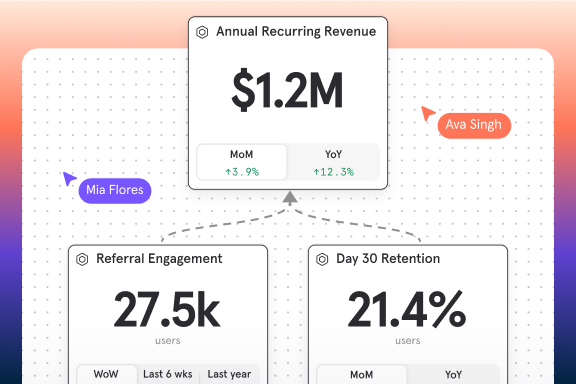Japan’s leading “Buy Now Pay Later” provider, Paidy, leverages self-service product analytics to analyze and optimize key user funnels and flows.
Company
As Japan’s pioneer and leading “Buy Now Pay Later” service, Paidy offers instant, monthly-consolidated credit to consumers by removing hassles from payment and purchase experiences. It can be used in a large number of top e-commerce sites, including Amazon.co.jp, Apple, DMM.com, and BicCamera.
Users can easily sign up for the service with just their email address and phone number with payment for the monthly consolidated bills equally hassle-free. Payment can be made via bank transfer or at any convenience store.
By completing an identification verification process (“Know Your Customer” or KYC process), users can also get access to Paidy Plus, and get upgraded benefits like zero-interest installments and Paidy Link, which allows Paidy to be used as a payment method at merchants that accept Visa.
Challenge
As a digital-first business, Paidy understood early on that it was critical to have access to user behavior data so that they could continuously refine and improve key user flows. Given the nature of their business, it was particularly important to optimize the KYC process as well. When users are verified, it helps Paidy to more accurately assess the credit status of each user, which enables the company to better manage credit risk.
Paidy is also constantly looking to introduce new features and services to its users, and this means that they are faced with the need to analyze data from multiple sources, which includes front-end data from their website and app, as well as third-party data from their partners.
While they were able to analyze the backend data and track financial metrics, the team knew that the ability to answer questions about conversions and drop off is critical to the long-term growth of the business.
Solution
The Paidy team found Mixpanel and decided to leverage product analytics to answer their pressing user flow and conversion questions. While they started with a simple use case for the front-end design team, Mixpanel is now a key part of how Paidy gets insights into key user flows like the KYC process.
“The KYC flow is simple. We explain the KYC process, then users take photos of their documents and IDs which get uploaded onto Paidy. The users are then asked to confirm if they’re politically exposed individuals or not before submitting their application. We then review the information and approve or reject the application”, explained Rafal Rawicki, Platform Architect at Paidy.
By using the Funnels reports in Mixpanel, the Paidy team easily identifies areas of friction and takes action to optimize the process. “This gives us visibility into what needs to be changed. For example, we noticed that around 3% of users would mistakenly mark themselves as politically exposed, and this would cause their applications to be rejected. There are many additional services that have the completion of the KYC process as a requirement so getting more users to complete this flow is important to our ability to upsell,” said Rafal.
They also made an interesting discovery that a large drop-off occurred when users are presented with the list of documents that they can use in the KYC process. “Our hypothesis is we have users who are interested in completing the process, but they don’t have their documents at hand and we should remind them about the document submission at a different time of the day”, said Rafal.
This discovery inspired improvements to the design and onboarding process, including the inclusion of new push notifications for users who dropped from the funnel.

Today, Paidy utilizes Mixpanel to analyze the conversions for most of their user flows and the changes in their metrics are also used to help them identify whether users are able to successfully navigate through the product or if something is broken.
The use of the platform has also expanded from the front-end design team to the marketing team and their analysts.
The Paidy team also looked at adoption and usage of new features like their Shopping and Inspiration tabs, including the search keywords and what users do after searching. The actions taken after searching are used to understand if the search result helped users to find what they were looking for.

Leveraging integrations for better insights
As Paidy continues to increase the variety of its offerings, Rafal sees a need to integrate all its tools, including Mixpanel, into a wider data stack.
“Data is critical for us to be able to make choices and also know when we need to make improvements in our business. This is something that everyone in Paidy understands. With our increasing list of services comes increased needs, and an increased number of data sources. So, we want to make sure everything in our tech stack integrates well with each other,” shared Rafal.
As a key component of the stack, Mixpanel is integrated with OneSignal (push notifications) and Appsflyer (mobile attribution) to help drive better and more complete customer insights for Paidy.
“We are continuously making improvements to how tools within our stack integrate with each other and have plans to integrate more data sources as we evolve,” said Rafal.
Paidy also continues to look at expanding their use of Mixpanel, including tracking the impact of product changes and enabling alerts for their team when metrics are trending in the wrong direction.
Words of advice
As the key owner of Paidy’s overall data and analytics stack, data governance, and product feature requirements, Rafal has this piece of advice to share, “We’ve learnt that it’s important to start with data from day one. Putting metrics in place from day one can be very useful. It may seem easy to scope and implement metrics later but not having them from the start makes it really hard to drive decisions and motivate stakeholders when it matters the most.”

